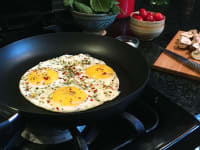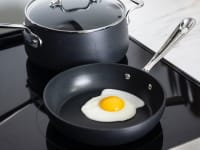Are nonstick pans really safe?
No need to worry when using Teflon pans, as long as you know these rules.
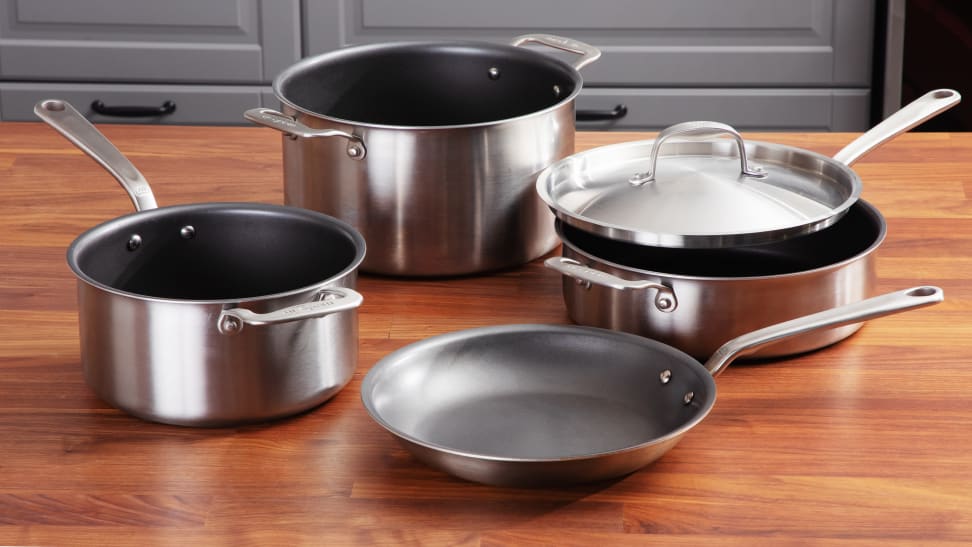 Credit:
Reviewed / Timothy Renzi
Credit:
Reviewed / Timothy Renzi
Recommendations are independently chosen by Reviewed's editors. Purchases made through the links below may earn us and our publishing partners a commission. Prices were accurate at the time this article was published but may change over time.
Nonstick pans are popular for good reason—they’re easy to clean, produce great results, and last quite a while. But is there a catch?
Concerns routinely pop up regarding the safety of Teflon, the chemical most commonly used to coat nonstick pans, but what is it, exactly? Is it safe? And are there ways to protect nonstick cookware to make it safer?
The short answer is yes, your nonstick cookware is safe. However, to ease your mind, here's the low-down on the chemical used to coat nonstick pans and why these concerns have cropped up in recent years.
What is nonstick cookware?
As promised by its name, nonstick cookware prevents food from clinging to the surface of your pots and pans. Your aluminum, stainless steel, copper and even cast iron pans may include a nonstick coating. It's typically made from a chemical known as polytetrafluoroethylene (PTFE) or as the brand-name Teflon.
When used as a coating, PTFE provides a smooth, even surface for cooking. Standard materials like aluminum and cast iron can be craggy, and even though the texture is microscopic, the rough slopes provide areas for food to cling and stick. Normally, you use a cooking agent like olive oil or butter to fill those gaps, but nonstick coating allows you to rely less on added fat, as the chemical smooths over those nooks and crannies.
Is nonstick cookware safe?
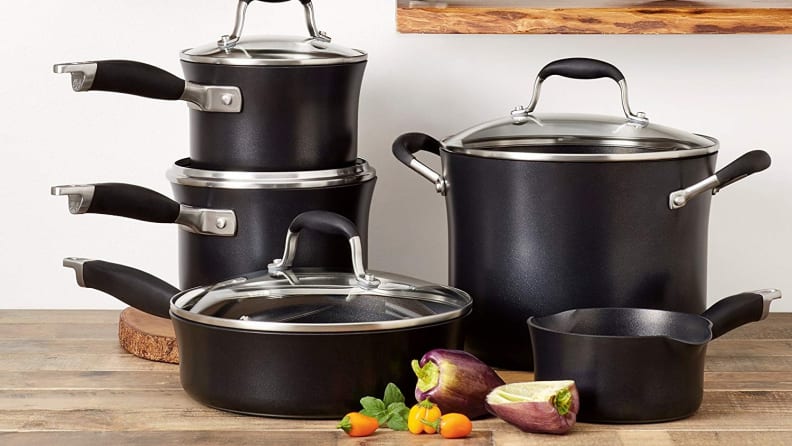
Nonstick pans are perfectly safe up to a certain temperature.
Nonstick cookware has been around since the 1930s, and for the first few decades of its manufacturing, it was created using a chemical called perfluorooctanoic acid (or PFOA), which today experts suspect may be carcinogenic. Thankfully, modern nonstick cookware has phased out the use of this chemical completely.
PTFE, the chemical predominantly found in modern nonstick coatings, is considered safe and stable when used properly. However, lingering concerns about current nonstick cookware revolve around heat levels. When cooking at 500℉ or lower, there's nothing to worry about, but if PTFE heats to over 500℉, the chemical begins to lose stability.
When heated to 600℉ or higher, PTFE may release toxic fumes that can cause physical symptoms, such as fever, chills, and headache, when inhaled. You'll rarely come across a recipe that calls for such a high temperature, though, so nonstick cookware widely accepted as safe for home cooking.
If you want to take precautions, don’t heat nonstick pans on your stove's highest setting, and never heat it when it's empty. Doing so increases the chance that the pan will become too hot with nothing to absorb the heat, which can damage the nonstick coating and release those same toxic fumes.
What about ceramic cookware?
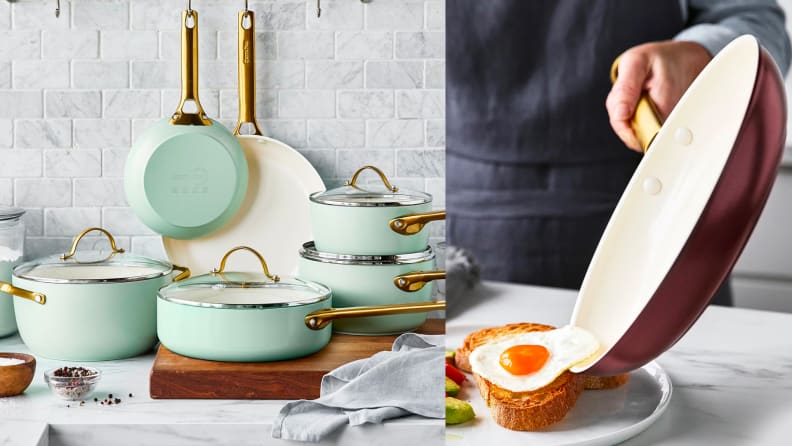
Trendy ceramic cookware offers a PFAS-free alternative to nonstick cooking.
Made popular in recent years by brands like Our Place and Caraway, ceramic cookware is another type of nonstick cookware made without any PFAS chemicals (including traditional PTFE).
Instead, these pans are made with a silicone coating (not actually ceramic), which offers a slick surface that mimics the nonstick properties of PTFE.
Ceramic cookware has been touted as a non-toxic alternative to PTFE-coated nonstick cookware. But given that research doesn't show that PTFE is unsafe to cook with, you shouldn't feel obligated to splurge for one of these trendy alternatives. Just like traditional nonstick pans, ceramic cookware can also degrade over time and requires extra care when it comes to utensils and upkeep.
But if you're extra concerned about off-gassing fumes or PFAS materials, we recommend opting for GreenPan cookware, which performed excellently during our testing—and won't break the bank.
Is nonstick cookware safe for the oven?
This depends on the pan you're using. We always recommend following manufacturer instructions before placing any piece of cookware in the oven—especially at high temperatures.
If you're unsure, find out if the base material of the pan—whether it's aluminum, steel, or another metal—is oven-safe before cooking. You’ll want to also check that the pan doesn’t have any rubber or plastic pieces, such as handles or lids, as these may warp.
Tips for cooking with nonstick pans

Nonstick pans can usually go in the dishwasher, but hand washing is often easier.
Now you know not to overheat nonstick cookware, but aside from monitoring heat exposure, there are several other ways to clean and care for nonstick pans.
1. Avoid metal utensils
Opt for wooden or plastic utensils when cooking with nonstick pans. The nonstick coating can scrape off when you use metal tools, and your pan may begin to deteriorate after being scratched, losing its nonstick capabilities.
2. Don’t heat an empty pan
This is the easiest way to accidentally overheat your nonstick pan. If you need to preheat a pan, put oil in it.
3. Wash your pans carefully
Gentle hand washing is the best way to care for nonstick pans. Thankfully, it's an easy task, as you won’t be scrubbing and scraping to get any residue off. However, make sure you use a soft sponge, as a harsh or abrasive cleaning tool can damage the nonstick coating.
Many nonstick pans are dishwasher-safe, and if you do choose to put them into the dishwasher, make sure they're not touching any other items that could scratch the coating. Most experts recommend hand washing, though, as the nonstick coating makes it quick and easy.
4. Don’t stack nonstick cookware
Avoid storing items in or on your nonstick pans or stacking dishes while drying. Dishes may scrape or rub against the nonstick coating, making it less effective down the line. We recommend using cloth dividers if you plan to stack your cookware in storage.
5. Know when to replace them
No one likes tossing their favorite pan, but nonstick cookware isn't designed to last forever. If your pan has started to visibly flake or you’re suddenly finding yourself needing to soak and scrape, it’s time to pick up a new one.
Alternatives to nonstick pans
Even though it's clear that nonstick pans can be used safely for most kinds of cooking, you still may want to explore alternatives. Fortunately, the kitchen team at Reviewed has spent dozens of hours testing the best cast iron pans, stainless steel pans, as well as whole cookware sets.
Happy (and safe) cooking!


